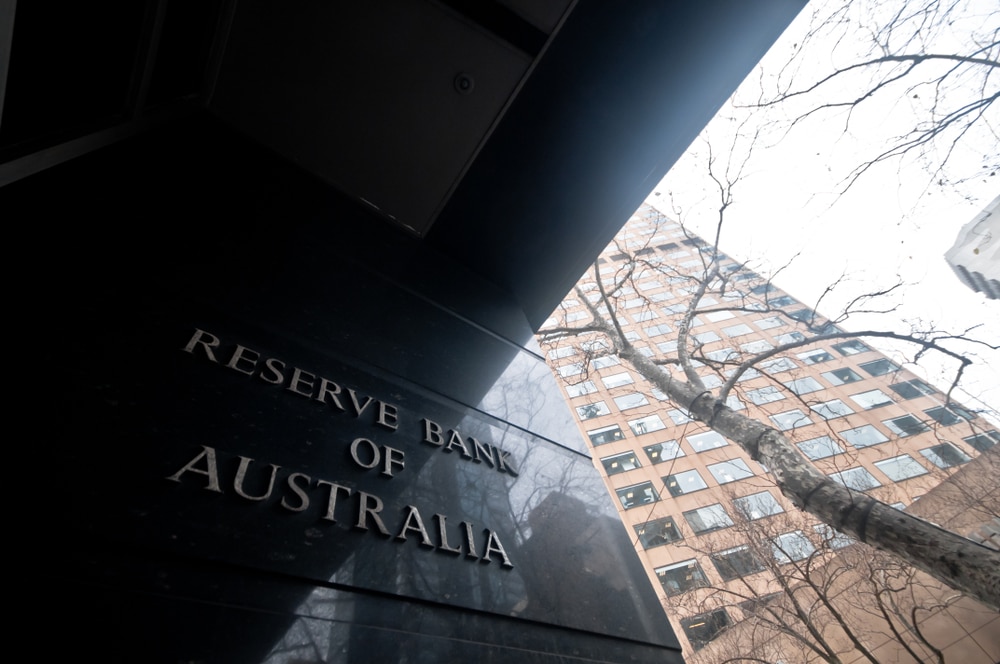
In a damning final report that impacts the lives of almost every person in Australia, Justice Hayne gave 76 recommendations that challenge key aspects of banking, including the big four bank pricing strategy.
>Download Now: Free PDF Future Proof Your Pricing Strategy
In the report, Justice Hayne cites shocking examples of local banks providing customers supposedly “impartial” financial advice. It was anything but. Advice that incentivises banking staff to sell more of their own, in-house, wealth management products and services to customers. All the while charging the more unsuspecting customers additional and often complicated fees and hidden charges which even the Royal Commission is struggling to understand. They even found two of the four local banks were continuing to charge fees to dead people to drive up their sales and profits.
A bit of a shock to us all. Especially when you think of the toxic culture that must be perpetuating this level of misrepresentation and malpractice.
In this article, we’ll go over some key aspects of the current bank pricing strategy in Australia. We’ll then follow up with a discussion on the new and much-publicised “service led” strategy from Westpac. Why is Westpac changing strategy now? Will it benefit banking customers?
A key question to consider as you read this article: Is it time for less regulation and more price competition between local banks in Australia?
At the end of the article, you will learn the different bank pricing strategies in Australia and better understand the service-led banking strategy.
Bank pricing strategy, what is it?
We are all customers of a bank, and for many years now we’ve been told by our bank that they are focused on our needs and working in our best interests. However, as the Royal Commission finds, the current bank pricing strategy is penalising unsuspecting customers. Mostly farmers and people with poor English skills. Intentionally breaching lending laws to drive and retain more earnings growth for the big four banks.
Behind all the different types of marketing for banks, the Royal Commission report shows the real aim of the bank pricing strategy is to keep wealth locked into the banking system. No matter how banks dress up their retail banking or corporate banking strategy, banks want to drive significant percentage increases in profit and share price value. There is little care or consideration of the ‘little man – who remain the loser in every scenario.
Capability Building Programmes For Pricing & Sales Teams!
Listed below are just a few pricing strategies and their application in banking to come out from the Royal Commission:
1. The Big Four Banks protect their profit margin by passing on small but regular increases in their costs to customers, even though Australian banks are some of the most profitable banks in the world (cost-based pricing strategy)
2. Complicated fees and charges structures for banks to profit from all commercial exchanges, using painful pricing practices such as annual account fees, transaction fees, credit card fees, foreign currency fees, charges and penalties (i.e., most applicable to retail banking strategy, business banking, corporate banking strategy)
3. ‘Reverse interchange’ that enable banks to pay themselves for issuing credit each time a business makes an electronic payment and transaction (applicable to global transactions, corporate banking strategy).
4. “Fractional reserve banking which allows banks to pay back only a fraction of their deposits with actual cash on hand while, at the same time, making all deposits available for withdrawal. A genius mechanism for economic growth, which frees up capital that can be loaned out to other parties. How? Well, no one knows (at least in the general public for deposit pricing strategy).
5. Fractional tactical discounts on deposits and other banking products are part of their deposit gathering strategies to attract new customers to their brand.
Charging different rates for the same product or service to different customer groups. (i.e., banking segmentation strategy to drive revenue and margin growth).
6. Aggressively up-selling new customers to alternatives (and often higher price points) offers, products and services as soon as a new customer sets up a deposit account. (i.e., target market segmentation strategy for banks, business development strategies for banks to increase their share of the customer’s wallet).
7. Upgrading customers’ accounts and credit cards under different brands to profit from their vertical integration strategy. (i.e., Westpac banking strategy, for example, capitalises on prior business integration with smaller national banks such as St George, Bank of Melbourne, Bank SA).
8. Increasing transaction fees across all types of credit cards whenever they want to generate incremental yield over an economic cycle (i.e., loans and credit strategy; fees). Banks offer their customers new and frequent credit card deals even if they are in debt. In fact, bigger credit limits encourage spending.
Banks reward their staff based on reference to profits and sales (i.e., commercial banking sales strategies).
9. Adjusting the regulatory mandate prices for banking products and services. Anywhere up to +50 bps above the initial prices recommended by the ACCC (i.e., core banking implementation strategy to optimise revenue legally across highly regulated product and services offers).
10. Locking customers into long term contractual agreements and profit-generating interest repayment structures. This overtime, generate significant profit for the banks at the expense of the customers (mortgage pricing strategy).
Banks also use benchmarks (like HEM) which are well-known for underestimating true spending. In fact, these benchmarks have become the principal rationale for lending and writing bigger loans to consumers and businesses (financial strategy for mortgage and business strategy).

The bank pricing strategy examples listed above show selling and pricing mechanisms that favour and protect the bank’s profitability and share price.
The Royal Commission report concludes that Australia’s banks have built every part of their operations around selling and pricing. To maximise profits at the expense of serving their customers’ needs. Another way of saying the bank pricing strategy is to protect and retain wealth and assets at the expense of serving customers’ needs.
How Many Pricing Analysts Do you Really Need? 👩💼 Podcast Ep. 40!
Customers take a very passive role in the bank pricing strategy and system as a whole. Customers tend to have limited freedom to choose options that suit them. They pay whatever the banks ask, while the banks maximise their profits. They don’t even have to provide any real customer value or service for the money they charge customers.
When you see the types of marketing strategies for banks (listed above) written on paper like this, the bank pricing strategy comes across as very one-sided. Probably not a real surprise to anyone if you think about the poor customer service standard we’ve all been getting from our banks over many, many years.
We’ve all pretty much been taught, generation after generation, that this one-sided way of banking is a way of life. Can’t change it; keep your head down; don’t challenge; don’t ask questions.
In many respects, the Royal Commission’s report indicates that Australia has a feudal banking system rather than a capitalist economic system.
Wealth is a pyramid. The banks are the feudal lords at the top of the pyramid; in complete control of the financial game/system they created to maintain the country’s greatest assets, resources, power and wealth.
Pricing and Marketing Strategies for Banking Services
To stay profitable, the big four banks implement a ruthlessly competitive pricing strategy to increase and retain profits. It’s also a completely uncommercial and uncompetitive banking pricing strategy set up to discourage innovation around price and customers.
Self-centred Bank Strategy
Under the current and very traditional banking system, the average Australian doesn’t get a good deal or service from their local bank at all. The bank pricing strategy is not customer-focused, or service led at all; it’s an incredibly self-centred bank strategy.
As the ubiquitous Australian adage taught our kids every day at childcare, schools and at home goes:
“We get what we get, and we don’t get upset.”
Customers know full well that they’re not going to get what they want and get charged for the privilege.
Customers know, even before they set up a personal or business deposit account with a bank that “the bank is king” not them:
- All banking offers are pretty much the same
- Their pricing is pretty much the same
- The range of fees are all pretty much the same
- Their customer service (online and offline) is uniformly poor
Reviewing the bank pricing deposit strategy in this way, brings to mind, industries such as mobile phones, fuels, grocery shopping. Very little price competition and value generated across these industries either – no wonder the Nationals want to have the Royal Commission investigating these industries too.
As a group, it is entirely feasible for local banks to raise prices whenever they see fit. But they all ‘toe the line’ and play it safe.
Yes, the local banks have to abide by laws and regulations. Banks are under very tight regulations and legal restrictions. It’s also very difficult to change highly regulated practices under the current banking model.
Banks need to protect themselves too, of course; and law and regulation are here to protect us all.
However, it’s the lack of price competition between Australian banks – especially in their retail banking strategy – which makes it almost impossible for the banks to generate value for their customers and customers to expect they will.
The banks could also call one another out for a series of malpractices written in the Royal Commissions report. However, they’d much rather play it safe.
The lack of price variability and bandwidth to compete on price and value in Australian banking institutions is a real problem for Australian customers at all levels (consumer, business and institutions).
Bankers will tell you:
“We can’t compete on price.”
“We’re highly regulated.”
“It’s very complicated.”
If there was more price competition, local banks would be forced to innovate around their customers making prices fairer:
- Customers would choose banks that would fix their financial problems not confuse them; and even better still, make them more wealthy.
- Banks would create more products and services that their customers want and need to solve real problems like debt, investment, wealth management, payments.
- Innovation would lead to more competitive pricing because all banks and private enterprise would want a piece of the action.
- More competitive pricing would in turn force banks to attract and retain customers based on the value they generate for them.
- A truly capitalist banking system would naturally emerge.
Bankers may all say they’re inaction to drive improvements for customers comes down to red tape, regulation and restrictions. However, it seems bankers use legal jargon, regulations, law and red tape as an excuse for poor customer service, misrepresentation, and fraud – a ‘get out of jail card’ (quite literally). In a way, more red tape propagates the rot in the banking system, rather than regulates it.
“Service-led” Banking Strategy
After the Royal Commission inquiry, NAB chiefs have resigned, and the Royal Commission condemns greed of the financial sector; calling to remove the ‘rot’ from Australian banking institutions. But is systemic change really on the cards in Australia? Probably, not.
It’s going to take a huge and conscious effort from banking customers to “re-set banking culture”. The Royal Commission has shared with us a problem that runs very deep. A problem that cannot be fixed in months but over many years.
The recent shift to a ‘service led’ banking strategy by Westpac should be seen as the first step in the right direction. However, Westpac’s self-advertised ‘service led banking strategy’ on their website is very vague indeed; and to a large extent unexplained and therefore questionable.
Is the ‘service led’ banking strategy just the same old banking model we’ve been discussing, but just automated and made more efficient?
OR
Is a ‘service led’ strategy one which will disrupt a rotten banking system and deliver real value to banking customers?
An answer may be that Brian Hartzer may wish to share with us all.
As we know now, these two banking models are two very different bank strategies. There is an urgent need for Bank CEOs and boards to communicate change clearly and simply to their customers and shareholders.
What does change mean for customers?
How will customers benefit?
What is the ROI for customers and investors funding the bank’s transformation efforts and strategy?
Bank transformation strategy
A bank transformation strategy focused first and foremost on improving the lives of their customers (not just reducing the bank’s costs) is just what Australians needs right now:
- The nation is going through mixed economic times
- Consumers and businesses are cautiously borrowing and looking to the banks to sharply decrease leverage
- House prices are cooling, and demand from property investors and consumers is weakening.
- Credit growth is also easing while delinquencies holding is still fortunately at a low level. (Albeit, up from 3 years ago)
- All local banks are all looking to reduce their costs of operations
- Banks are currently buying software and advanced systems to automate simple tasks and massively to reduce their branch network (i.e., cutting headcount in their hundreds)
All leading indicators suggest big change is on its way for us all in Australia.

Changing to a service-led strategy will not be easy during uncertain economic times.
Australians have become accustomed to the good old times and are sceptical that change will benefit them at all (especially after the Royal Commission findings).
The first step to implementing a service led bank strategy that improves customers’ lives includes:
- Updating marketing
- IT systems improvements and implementation, automation
- IBM Watson cognitive capabilities
- Data enhancements
It will take an enormous amount of leadership, capability, effort, and intervention from all levels of the organisation and society to transform a bank into a ‘service led’ banking organisation. One bank cannot do it on its own. Customers must understand it. Management and boards alike must communicate it and drive it. Influential share-holders and institutions must back it.
A service led bank strategy still needs to be driven by high calibre people and facilitated by systems and IT. Not the other way around.
I can recall how Wells Fargo, for example, went through a similar bank transformation a few years ago. Wells Fargo was regularly in the press as the shining example of a great ‘service led’ banking business. They publicised to the world how great their new bank pricing strategy was for customers. They pledged to spend less time dealing with banking issues and more time running their businesses.
Then, out of the blue, WellsFargo was fined $US185 million ($240 million) in 2016 for embezzling money from their customers. They also sacked 5300 staff because they fraudulently sold customers’ financial products that their customers didn’t know anything about.
Under the guise of a new service model, Wells Fargo showed that they could propagate a ruthless culture of pressure to remunerate what they lost and get even more profitable sales. Hence, their staff set up 2 million fake deposits and credit card accounts to skim fees and earn bonuses.
The “customer is king” banking marketing strategies or mantra advertised can easily devolve into useless platitudes; and, worse still, a cunning rouse for misrepresentation and fraud.
The former Westpac chief executive Gail Kelly time and time again championed duplicating Wells Fargo’s recognised success in strengthening customer relations and improving the volume of retail products sold to consumers. In hindsight, we see that perhaps this was hasty. The service led model is easily corrupted, as the Wells Fargo case clearly shows.
Pricing Recruitment For Pricing Managers!
Implications
The Wells Fargo case and the recent Royal commission should be a wake-up call to us all. But a one-off Royal Commission inquiry and a three-volume report of recommendations just won’t cut it.
As more Australian Banking CEOs move to a ‘service-led’ bank strategy, products and services, systems, teams, and processes need new pricing strategies.
Old skills, traits, and experiences require new pricing skills, fresh perspectives, and specialised knowledge. Therefore, diversity will be key to driving bank strategy and transforming deep-rooted institutional habits dating back centuries.
Driving change will not be easy. Diversity is a real issue in Australian banks. As Brian Hartzer says: “I think one of the dangers in large companies is that people start to think that their job is to create PowerPoints, [rather than] to make decisions and improve things for customers….this drives me crazy.”
There are massive diversity and isolation issues in local banks in Australia across the board, including gender, ethnic and intellectual. Carefully hiring the right mix of people for the next phase in banking will be a crucial step to implementing a ‘service-led strategy.’
〉〉〉 Get Your FREE Pricing Audit 〉〉〉
Bottom Line
In conclusion, this article discussed the local bank pricing strategy in Australia in light of the Royal Commission’s final report.
We discussed ways in which price competition between the big four Australian banks could help drive more innovation around customers, price transparency and accountability for decisions and inaction.
We find that generating real customer value requires a different banking model and bank pricing strategy to be successful. One which encourages price competition and innovation.
A key conclusion from this article, therefore, is that it’ll take brave leaders, innovators and capable teams to push through the pre-existing red tape and power systems. They need to create a better bank pricing strategy, models, teams and systems.
We must take a bank transformation strategy seriously otherwise nothing will change. Thus, not acting in the best interest of other people creates toxic cultures and deepens the rot in banking and financial systems.
Creating wealth has always been a two-way street; never perceived or managed like this before. People have never had the power to stand up for themselves and demand better prices and value from mighty banks. But maybe now’s the time…
Click here to access your free pdf guide on driving pricing strategy in your business.
For a comprehensive view on building a great pricing team to prevent loss in revenue, download a complimentary whitepaper on Future Proof Your Pricing Strategy.
Are you a business in need of help to align your pricing strategy, people and operations to deliver an immediate impact on profit?
If so, please call (+61) 2 9000 1115.
You can also email us at team@taylorwells.com.au if you have any further questions.
Make your pricing world-class!

